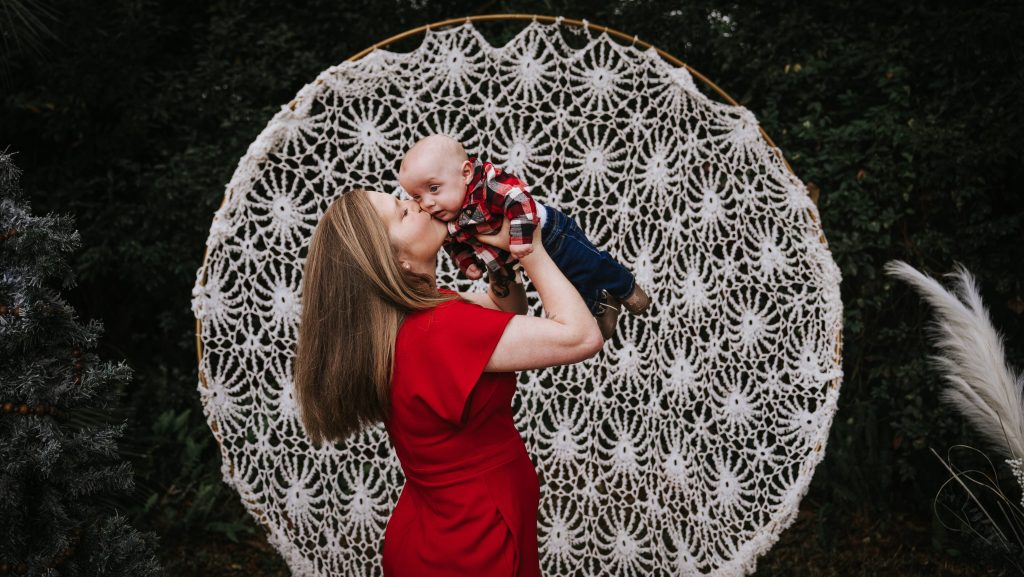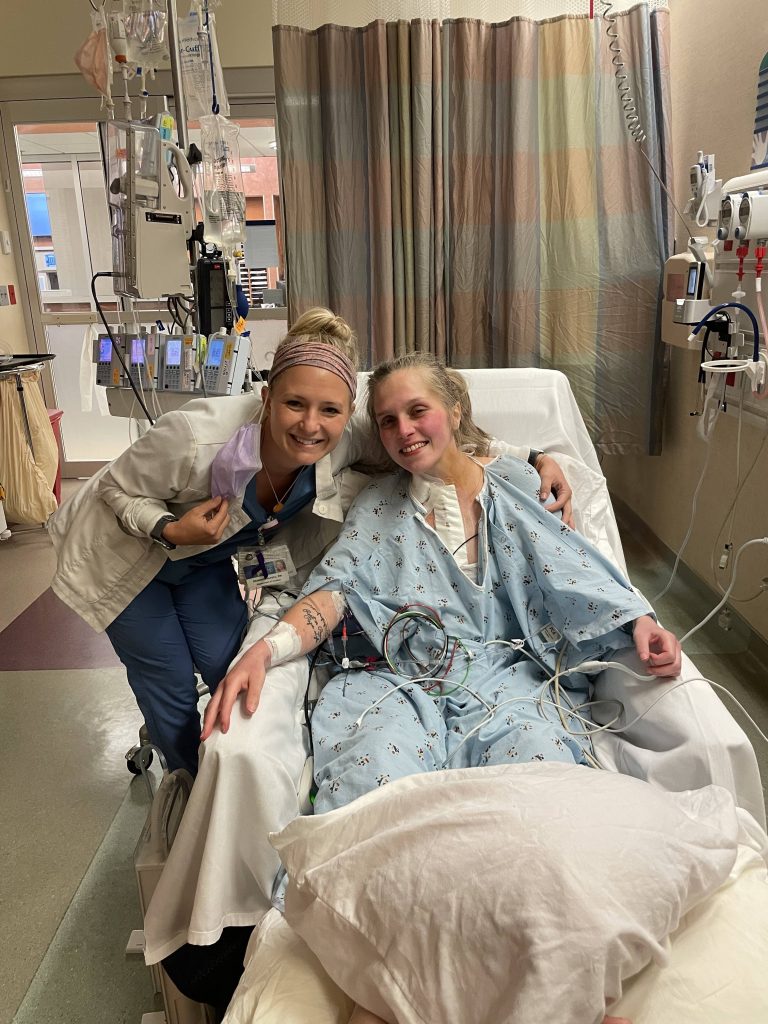
A challenge from the beginning
Promise Garell grew up with a congenital heart defect. She was born with transposition of the great arteries, where her heart vessels and her heart were not correctly transfigured, preventing her heart from providing adequate blood flow to the rest of her body. Her first surgery to address this was at 3 days old. Throughout her formative years, she says her childhood was normal. She was active and even played sports.
"I was fine until I was probably 8 years old, when the symptoms started," says Promise. "At the time, I was having signs of a heart attack, but it was because my troponin levels were elevated. This would happen sporadically when I was working out or playing softball."
It would be another seven years before Promise would receive open-heart surgery to address these issues. "I think I was 15, and finally, after about seven years of having these issues and being in and out of the emergency room undergoing constant testing, I received an invasive procedure that lasted about 5 ½ hours," says Promise. "Luckily, after that surgery, I was pretty healthy."
In 2020, she married her husband, Andrew, who serves in the Navy. By early 2022 at age 24, Promise received the exciting news that their family was growing. She was expecting their first child. About six months into her pregnancy, she began to struggle. The toll of carrying a growing baby led to complications during her pregnancy, including congestive heart failure.
Watch Promise's Story
"I was fine for the first couple of months, and then the third trimester came, and my body could not handle the fluid shifts," says Promise. "Due to that, I ended up in cardiogenic shock, which is pretty much where your whole body is just shutting down because your heart is no longer perfusing like it's supposed to."
Promise's son, Paxton, was born 11 weeks early in June. He spent two months in a neonatal intensive care unit. Throughout this time, Promise's health continued to decline due to heart failure. She would spend time in and out of several hospitals as teams tried to determine the best course for her care. Ultimately, Promise and her family made the decision to transfer to Mayo Clinic.
Mayo Clinic provides new heart, new lease on life
In early September 2022, Promise arrived at Mayo Clinic in Florida. Throughout her life, she says she always kept Mayo Clinic in the back of her mind as one of the top healthcare institutions she would use in the event of an emergency.
"As a congenital heart defect patient or someone with lifelong heart issues, you always keep in mind the right places to go just in case something happens," says Promise. "And luckily, it worked in my favor."
Thanks to a timely military transfer, stationing her husband at Naval Air Station Jacksonville, Promise was now close enough to the healthcare institution she often thought about throughout her health journey. "The Navy definitely got us where we needed to be at the right time," says Promise.

Doctors immediately knew Promise needed to be transferred to the ICU, where temporary pumps and medication helped keep her alive until her care team could figure out if she was a candidate for a transplant and if she would survive one.
"When we met Promise for the first time, we realized she was probably one of the sickest patients that we would encounter," says Dr. Rohan Goswami, a Mayo Clinic transplant cardiologist. "It was clear within minutes of seeing her she was going to need to be transferred to the ICU. We had a new mother really working to survive to take care of her family."
Two days after arriving, she was added to the heart transplant waitlist.
"I knew the doctors were going to do what they needed to get me on the list, to get me a heart," says Promise. "I think them knowing that I had a 3-month-old son was just as much a motivation for them as it was for me."
Seeking a plan on how to transplant Promise's heart, the team needed more information about the vessels in her heart. "We needed to have a game plan for how we were going to take the heart out, what type of heart we were going to accept, and how we were going to implant it," says Dr. Parag Patel, a Mayo Clinic transplant cardiologist.
3D technology emerged as the solution. Given the complexity of her situation, surgery would not have been possible without a 3D rendering for planning. The 3D team received the request from Promise's transplant team, and within 24 hours, they were able to research, design and deliver.
"Through a multidisciplinary fashion with our heart transplant team, critical care team, cardiothoracic team and cardiac anesthesia, we were able to work together to find out what things would prevent us from being successful with her care," says Dr. Patel. "It became very evident that in order to optimize her care, we needed to know what we were getting into, how her heart position was actually related to her chest wall, and how her vessels were within her chest. So we reached out to our 3D printing team and our 3D reconstruction team and asked them to reconstruct Promise's heart."
The 3D renderings helped the team to quickly establish a game plan. The surgeons were able to reference the model in the operating room even as they performed her procedure.
When listed for her transplant, Promise's team decided to employ a strategy for a donation after cardiac death heart using ex vivo perfusion, also known as "heart-in a box." This allowed the heart to beat while being transported from the donor center, and, thereby, allowed physicians to monitor the donor heart closely to ensure it was stable before the transplant. Her doctors say both hearts — her "original" heart and the donor's heart — were beating simultaneously in the same room prior to the start of the procedure. Organ perfusion systems, such as "heart in a box," have allowed for increased use of donation after cardiac death, where the heart stops beating. Once the heart is reanimated, the function of the organ is assessed for transplant. The system allows the organ to stay warm and metabolically active, extending the time between retrieval and transplant by several hours.
Promise's new heart came from a hepatitis C-positive donor. In an effort to expand donor pools, organs that previously would have been discarded are now saving more lives thanks to a new generation of highly effective antiviral medications that allow for safe transplantation. After the transplant, patients begin antiviral treatment that will eliminate the virus.

"Because of the collaborative approach and high level of communication with each of the members of our multidisciplinary team, we were able to take separate pieces of technology and cater our therapies and tailor it for Promise," says Dr. Patel. "The biggest thing to understand is when we have technology, it provides us more knowledge than what we had a year ago. And taking that technology and taking that knowledge is imperative for us to identify, No. 1: How can we do better for our patients? And No. 2: How can we prevent problems for our patients? And most importantly, how can we do things now that we could not do a year or two ago?"
Promise received her new heart on Sept. 15, 2022. She has since celebrated many milestones, including her son's first birthday, her 25th birthday and her first transplant anniversary.
"When you come to Mayo Clinic, they care," says Promise. "They want to make you better. They will do whatever it takes to make you healthy, and I am forever grateful for that. Being on that table as a new mom, as a wife, a daughter, I think the biggest thought was I had to pull through this surgery for my son — if not for myself, my husband, my mom and my brother — for my son. My son needed me."






